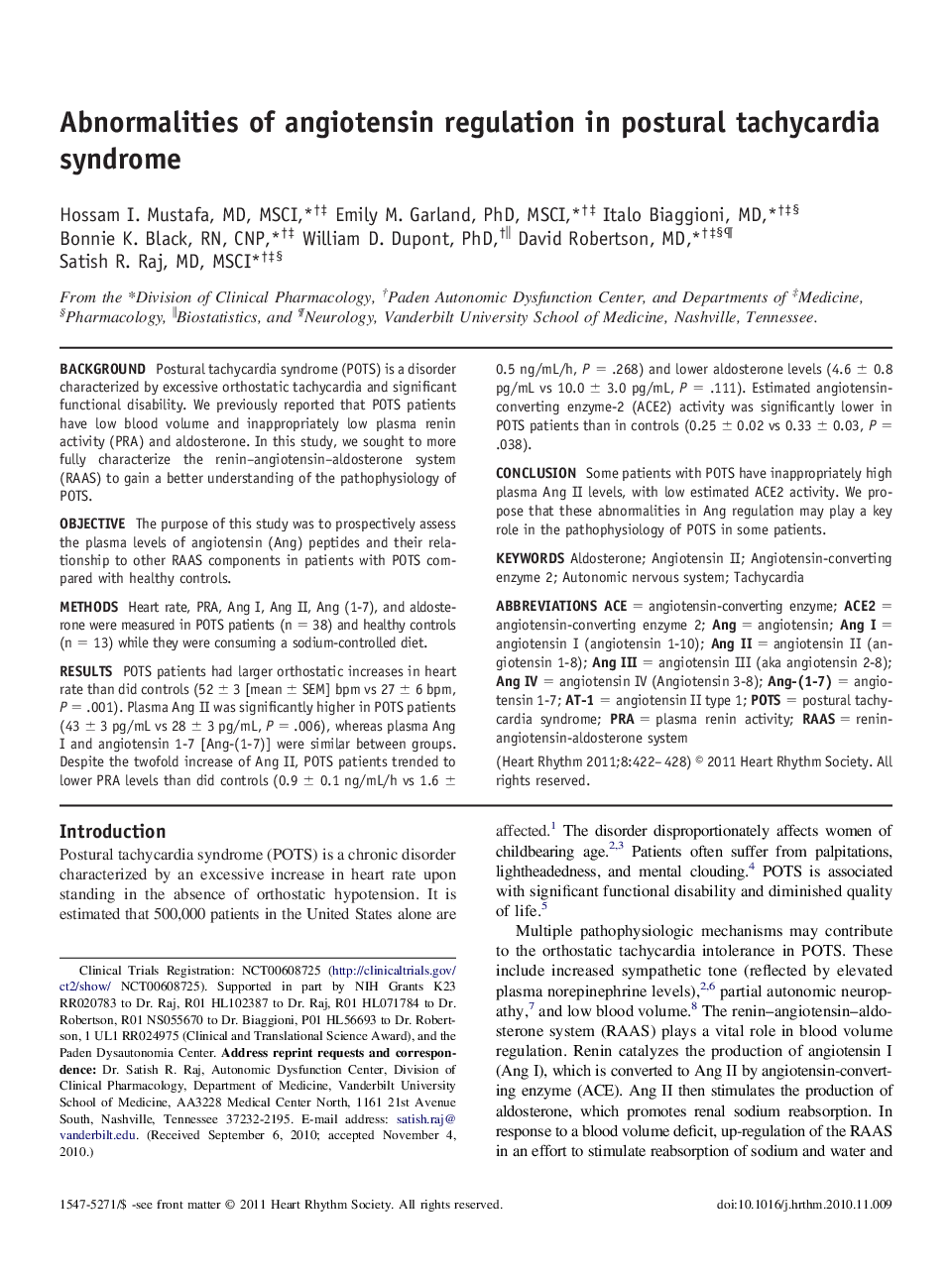| Article ID | Journal | Published Year | Pages | File Type |
|---|---|---|---|---|
| 2923612 | Heart Rhythm | 2011 | 7 Pages |
BackgroundPostural tachycardia syndrome (POTS) is a disorder characterized by excessive orthostatic tachycardia and significant functional disability. We previously reported that POTS patients have low blood volume and inappropriately low plasma renin activity (PRA) and aldosterone. In this study, we sought to more fully characterize the renin–angiotensin–aldosterone system (RAAS) to gain a better understanding of the pathophysiology of POTS.ObjectiveThe purpose of this study was to prospectively assess the plasma levels of angiotensin (Ang) peptides and their relationship to other RAAS components in patients with POTS compared with healthy controls.MethodsHeart rate, PRA, Ang I, Ang II, Ang (1-7), and aldosterone were measured in POTS patients (n = 38) and healthy controls (n = 13) while they were consuming a sodium-controlled diet.ResultsPOTS patients had larger orthostatic increases in heart rate than did controls (52 ± 3 [mean ± SEM] bpm vs 27 ± 6 bpm, P = .001). Plasma Ang II was significantly higher in POTS patients (43 ± 3 pg/mL vs 28 ± 3 pg/mL, P = .006), whereas plasma Ang I and angiotensin 1-7 [Ang-(1-7)] were similar between groups. Despite the twofold increase of Ang II, POTS patients trended to lower PRA levels than did controls (0.9 ± 0.1 ng/mL/h vs 1.6 ± 0.5 ng/mL/h, P = .268) and lower aldosterone levels (4.6 ± 0.8 pg/mL vs 10.0 ± 3.0 pg/mL, P = .111). Estimated angiotensin-converting enzyme-2 (ACE2) activity was significantly lower in POTS patients than in controls (0.25 ± 0.02 vs 0.33 ± 0.03, P = .038).ConclusionSome patients with POTS have inappropriately high plasma Ang II levels, with low estimated ACE2 activity. We propose that these abnormalities in Ang regulation may play a key role in the pathophysiology of POTS in some patients.
